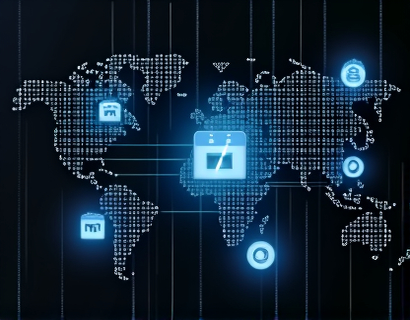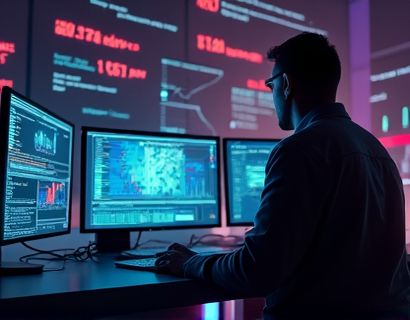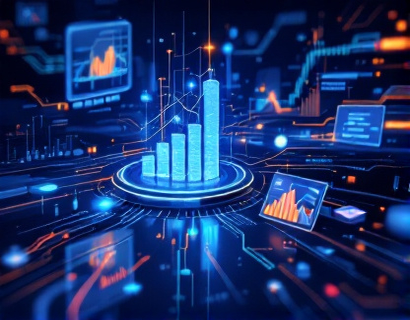Blockchain-Driven Transformation: Unlocking Liquid Value and Market Accessibility for Real-World Assets
Blockchain technology is at the forefront of a revolutionary transformation in asset management, offering unprecedented opportunities for the tokenization of real-world assets. This innovation is reshaping the landscape by enhancing liquidity and market accessibility, integrating physical assets into the digital ecosystem in a secure and transparent manner. The potential for individuals and businesses to unlock new opportunities and streamline transactions is vast, ensuring a trustworthy environment that fosters growth and efficiency.
The traditional asset management process often involves cumbersome and opaque procedures, making it difficult for assets to be easily bought, sold, or traded. Real-world assets, such as real estate, art, machinery, and intellectual property, have historically been tied to physical locations and paper-based records, limiting their liquidity and accessibility. Blockchain technology addresses these challenges by providing a decentralized, immutable ledger that can represent and manage these assets in a digital format.
Tokenization, the process of converting rights to an asset into a digital token on a blockchain, is the key to unlocking liquid value. These tokens represent fractional ownership or usage rights to the underlying asset, allowing multiple parties to participate in the asset's value without the need for physical possession. This democratization of asset ownership opens up new markets and investment opportunities, making it possible for a broader range of investors to access previously exclusive assets.
The benefits of blockchain-driven asset tokenization are manifold. First, it significantly enhances liquidity. Traditional assets are often illiquid, meaning they take a long time to buy or sell, and the process can be costly due to intermediaries such as brokers and lawyers. Tokenization simplifies this process by enabling instant transactions on blockchain platforms, reducing costs and increasing the speed of trading. This liquidity is particularly beneficial for smaller investors who can now enter markets that were previously inaccessible due to high entry barriers.
Second, blockchain technology ensures transparency and security. Every transaction on the blockchain is recorded in a public ledger, which is immutable and verifiable by all participants. This transparency reduces the risk of fraud and errors, as all parties can trace the history and ownership of an asset with ease. Smart contracts, self-executing contracts with the terms directly written into code, further automate and enforce the rules of asset transactions, reducing the need for intermediaries and lowering transaction costs.
Market accessibility is another critical advantage. Blockchain platforms can connect buyers and sellers globally, breaking down geographical barriers and expanding market reach. This global access allows for more diverse and liquid markets, where assets can be traded 24/7 without the constraints of traditional market hours or location-specific regulations. For asset managers, this means increased exposure to a wider pool of investors and the ability to diversify portfolios more effectively.
The integration of real-world assets into the blockchain ecosystem also brings about new business models and revenue streams. For instance, in the real estate sector, fractional ownership through tokenization can make property investment more accessible to retail investors. This model allows multiple individuals to own a fraction of a property, sharing in its rental income and appreciation in value. Similarly, in the art market, tokenization can provide artists and collectors with new ways to monetize and verify the authenticity of artworks, reducing the risk of forgeries and enhancing provenance.
In the realm of supply chain management, blockchain-driven tokenization can improve traceability and efficiency. By tokenizing assets such as raw materials, components, or finished goods, each step in the supply chain can be recorded on the blockchain. This creates an immutable record of the asset's journey, from production to delivery, ensuring transparency and accountability. Such traceability is crucial for industries like pharmaceuticals, where the authenticity and safety of products are paramount.
The financial sector stands to gain significantly from blockchain-driven asset tokenization as well. Securitization, the process of pooling various types of debt or assets and selling them to investors as securities, can be streamlined through blockchain. Tokenization allows for the creation of digital securities that can be traded on blockchain platforms, reducing the complexity and cost of traditional securitization processes. This can lead to more efficient capital markets and better access to credit for businesses and individuals.
However, the path to widespread adoption of blockchain-driven asset tokenization is not without challenges. Regulatory frameworks are still evolving, and there is a need for clear guidelines to ensure compliance and protect investors. Interoperability between different blockchain platforms is another critical issue, as it will enable seamless asset transfer and usage across various ecosystems. Additionally, scalability remains a concern, as blockchain networks must be able to handle a high volume of transactions without compromising performance.
Despite these challenges, the potential benefits are driving significant innovation and investment in the space. Various projects and platforms are emerging to address these issues and facilitate the tokenization of real-world assets. For example, some platforms are focusing on creating standardized frameworks for asset tokenization, while others are developing specialized blockchain solutions for specific asset types, such as real estate or art.
The impact of blockchain-driven asset tokenization extends beyond financial markets. In the public sector, tokenization can enhance government services by improving transparency and efficiency. For instance, land registry systems can be modernized using blockchain, reducing the time and cost associated with property transactions and reducing the risk of fraud. This can lead to more efficient urban planning and better resource allocation.
In the environmental domain, blockchain can play a role in promoting sustainable practices. Tokenization of carbon credits, for example, can create a more transparent and efficient market for carbon trading, incentivizing companies to reduce their carbon footprint. This aligns with global efforts to combat climate change and promotes a more sustainable future.
For asset managers, embracing blockchain technology means staying ahead of the curve and capitalizing on new opportunities. By integrating blockchain into their asset management strategies, they can offer more innovative and efficient services to their clients. This includes providing better insights through enhanced data transparency, offering new investment products, and reducing operational costs through automation and smart contracts.
In conclusion, blockchain-driven transformation is unlocking liquid value and market accessibility for real-world assets in ways that were previously unimaginable. By enabling the tokenization of assets, blockchain technology enhances liquidity, ensures transparency and security, and expands market reach. While challenges remain, the potential benefits are driving significant advancements and investments in the space. As the ecosystem continues to evolve, the future of asset management looks increasingly digital, efficient, and inclusive.










































